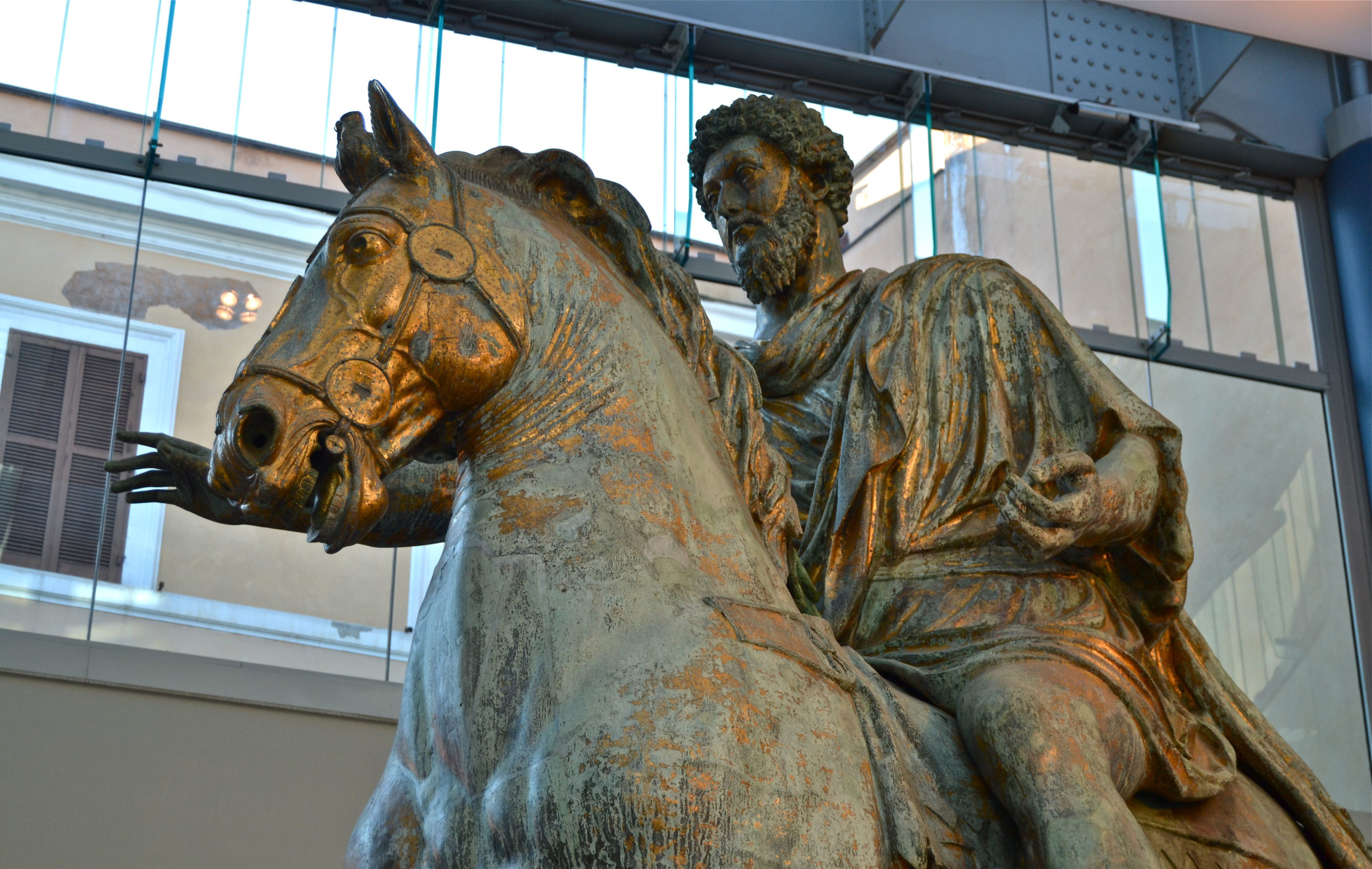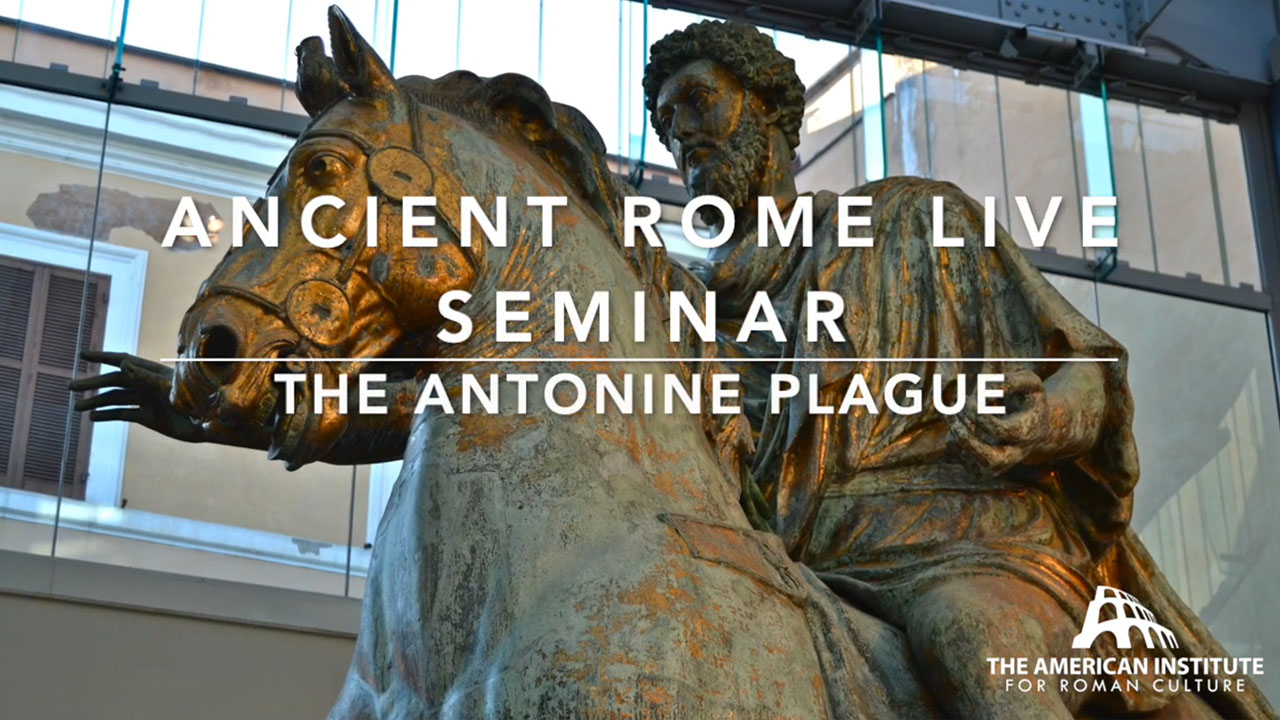Watch the online seminar hosted by Darius Arya here:
The Antonine Plague is the oldest plague recorded in ancient documents. It reached Rome and the Italian peninsula during the reign of Marcus Aurelius, emperor from 161 to 180 AD of the Nerva-Antonine dynasty. It had devastating economic, social, and religious impacts in the eternal city and across the Roman Empire.
Read More
The plague broke out in the East (in the area of modern day Turkey) where Lucius Verus (Marcus Aurelius’s co-ruler) led the Roman military campaign in the battle against the Parthian Empire. The victorious army returned to Rome between 165 – 166 CE, bringing the plague with them.
Some contemporary scholars identify the plague as a strain of the smallpox virus, although its exact identity remains uncertain. An assessment of the sanitary conditions of Roman cities in recent decades has revealed just how easy it was for disease to spread in public latrines and baths. Romans of all social classes were commonly afflicted by parasites such as ringworm, lice, and other invasive species. Under these conditions, the plague quickly spread, causing up to 2,000 deaths per day, according to ancient sources.
The proliferation of the plague and its effects were most famously documented by Galen, a celebrated Greek medical researcher and Marcus Aurelius’s personal physician. Though records are inconsistent, it is believed that Galen fled Rome at the outset of the pandemic, fearing nothing could be done to prevent its spread. The emperor summoned Galen back in late 168 CE for his medical expertise, when Galen wrote that the plague was more destructive than ever before and worsened by the cold winter months.
The effects of the plague throughout the Roman Empire were catastrophic, according to ancient authors and the interpretation of archaeological evidence associated with the first pandemic. Enslaved and destitute people were the most affected. The army was also gravely affected, as they were the first to contract the disease. The number of Roman soldiers fell drastically, forcing the empire to recruit new legions including gladiators, mercenaries, and criminals. It is argued that Lucius Verus himself died a victim of the plague in 169 AD.
In recent years, scholars have continued to scrutinize the traditional literary sources with more skepticism. However, recent analysis of ice-core samples from Greenland that document lead pollution (associated with Roman lead-silver mining and smelting) does favorably indicate a significant drop-off in industrial production throughout the empire, right in line, chronologically, with the outbreak of the Antonine Plague.
Bibliography
- “The Antonine Plague Revisited” by Richard Duncan-Jones – https://www.academia.edu/40128843/THE_ANTONINE_PLAGUE_REVISITED
- “The Antonine Plague and the Spread of Christianity” by Sarah K. Yeomans – https://www.academia.edu/34889977/The_Antonine_Plague
- “The Antonine Plague and the Third Century Crisis” by Christer Bruun – https://www.jstor.org/stable/10.1163/j.ctv2gjwz64.19
- “Galen and the Plague” by Rebecca Flemming – https://www.jstor.org/stable/10.1163/j.ctvrxk2wj.12
- “Plagues, climate change, and the end of an empire: A response to Kyle Harper’s The Fate of Rome (1): Climate,” John Haldon, Hugh Elton, Sabine R. Huebner, Adam Izdebski, Lee Mordechai, Timothy P. Newfield – https://compass.onlinelibrary.wiley.com/doi/10.1111/hic3.12508
- “Human parasites in the Roman World: health consequences of conquering an empire,” Piers D. Mitchel – https://www.cambridge.org/core/journals/parasitology/article/human-parasites-in-the-roman-world-health-consequences-of-conquering-an-empire/6464BDBB5D4B8EC0B08C503B6ECD1B7B
- “Lead pollution recorded in Greenland ice indicates European emissions tracked plagues, wars, and imperial expansion during antiquity,” –https://www.pnas.org/doi/10.1073/pnas.1721818115
This content is brought to you by The American Institute for Roman Culture, a 501(C)3 US Non-Profit Organization.
Please support our mission to aid learning and understanding of ancient Rome through free-to-access content by donating today.
Cite This Page
Cite this page as: Darius Arya, The American Institute for Roman Culture, “Seminar – The Antonine Plague” Ancient Rome Live. Last modified 04/11/2023. https://ancientromelive.org/seminar-the-antonine-plague/
License
Created by The American Institute of Roman Culture, published on 03/24/2020 under the following license: Creative Commons: Attribution-NonCommercial-ShareAlike. This license lets others remix, tweak, and build upon this content non-commercially, as long as they credit the author and license their new creations under the identical terms. Please note that content linked from this page may have different licensing terms.



